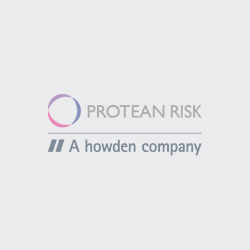Helping Clients to Understand the Everchanging D&O Environment
The global insurance market (and London insurance market even more so) is currently undergoing unprecedented change after 15+ years of a ‘soft market’. The market typically goes through soft and hard cycles and during a soft cycle, there is a greater variety of insurers competing with each other for business hence premium rates are lower and the scope of cover widens as insurers try to win said business from one another. As this has occurred and the scope of cover has broadened to levels not previously seen, more and more insurers are on the hook for large claims which has subsequently led to many questions from Lloyd’s of London and the regulator about the profitability and sustainability of insurer’s underwriting portfolios.
With this in mind, insurers have been forced into reviewing their underwriting portfolios and amending premium rates so that underwriting becomes more stable and profitable going forward. With this, comes the ‘hardening’ of the market (of which it has been doing so for the past two to three years) and in essence, we are seeing all insurers push premium rates up, increase the levels of self-insured retentions and reduce the scope of coverage by imposing wider exclusions or limiting insuring clauses and/or extensions where possible.
The following graph highlights the traditional insurance market cycle:
So what has happened to D&O insurers?
We have unfortunately seen many examples of what poor underwriting performance means for insurers with a lot of insurers either having to cease writing business entirely or pulling out of certain lines. Within the Financial Lines space that we operate in, insurers such as Vibe, Neon, Acapella, Argo and even more recently AXA XL, have all ceased trading and underwriting business due to combined ratios running far in excess of 100% and thus incurring large losses. AXA XL, a household name many insureds may well be familiar with, was a very big shock given how large they are and whilst the entire insurer has not shut down, their entire FI and Commercial D&O books have been closed due to heightened claims activity and a lack of profitability.
What has driven the change in underwriting appetite?
Turning to D&O insurance more specifically, Commercial D&O (non-FI i.e. anything not within the regulated financial services space or similar) has hardened more so than Financial Institutions D&O with average rate increases for a lot of renewals being in excess of 150%. For years now, D&O insurance has offered very broad coverage and has generally been incredibly underpriced and insurers are now being hit across the globe. Increased class actions and shareholder related claims (especially in heavily litigious territories such as USA/Canada) has forced much of the premium increase as insurers seek to recoup lost premium from paid claims. Contrarily, fortunately the FI D&O market has not hardened quite so much as the Commercial D&O market and this is reflected in many insurer’s terms.
Are other classes undergoing the same challenges as the D&O market?
Aside from the Financial Lines market, all classes of insurance are undergoing rapid rate increases and hardening factors. One must bear in mind that an insured’s insurance premium contributes to a ‘premium pool’ and that when a claim is made, the ‘pool’ pays out regardless of how much each individual insured pays in. With this in mind, all forms of loss (financial or otherwise) contribute to the hardening market and one only has to look at the many catastrophe losses that have occurred since 2017, for example those being Australian wildfires, various storms and hurricanes and typhoons in the Middle East. As a result, the hardening market is not a sudden change but rather has been steadily hardening over a period of time and will likely continue to do so for many more months, if not years.




